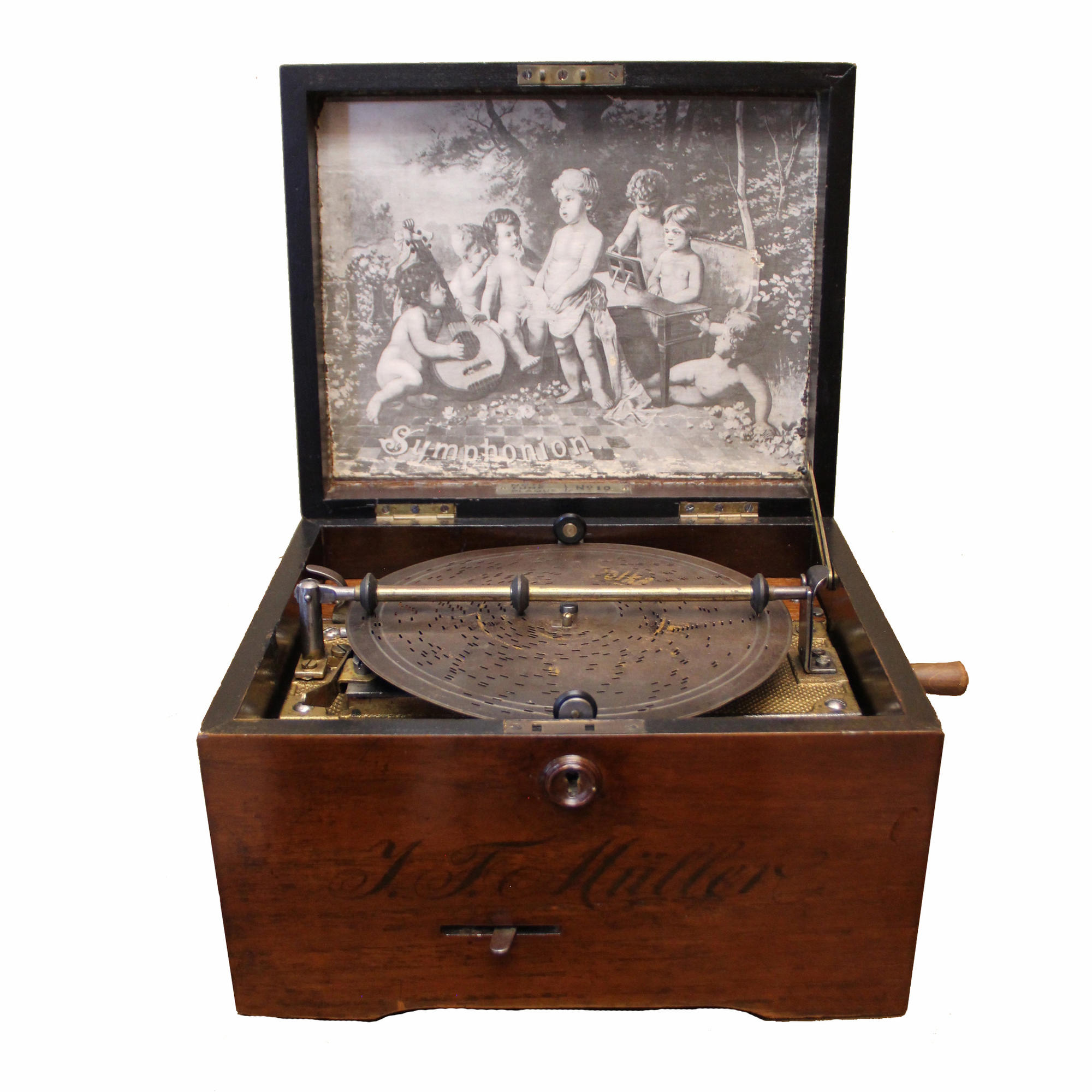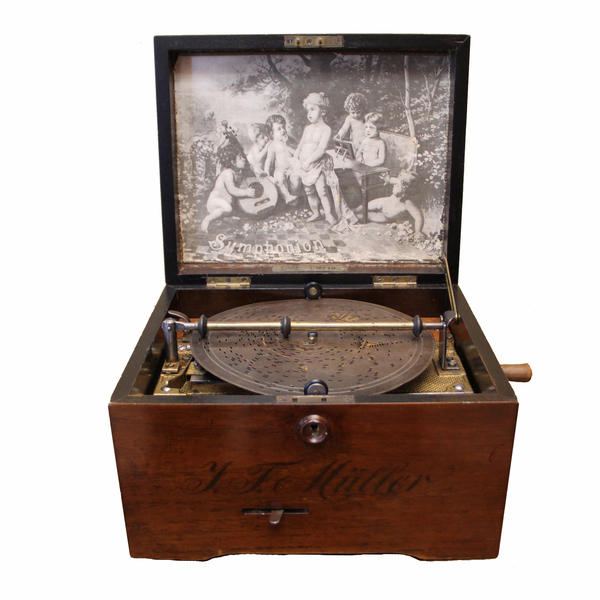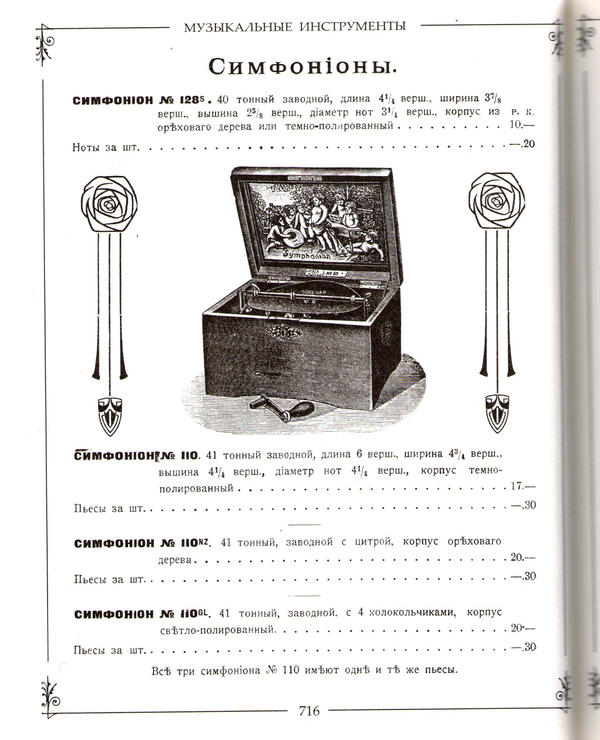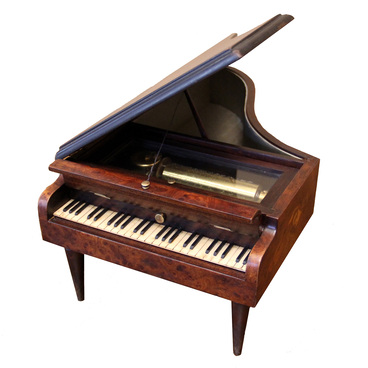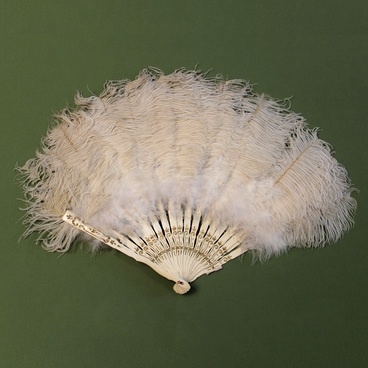Symphonion is disc-playing music box, a mechanical device. It was designed in mid-1880’s by Paul Lochmann, an inventor from Leipzig. The device had a comb with metal tongues of various length, each sounding its own way. A metal disc called the note speckled with little metal teeth would be placed above the comb. While rotating, the disc would punch one or several tongues of the comb and a sound would be reproduced.
Symphonion
Время создания
Late 19th c.
Место создания
Germany
Размер
16,5x25,5x22,5 cm
16.5x25.5x22.5 cm
16.5x25.5x22.5 cm
Техника
Metal, wood, paper, plant manufactured
Выставка
0
Открыть в приложении#1
Symphonion
#3
#13
The metal discs were removable. By changing them one for another, a listener could enjoy various music pieces, the feature that made a symphonion different from simpler music boxes that could play one melody only.
Inside the symphonion: the mechanism
#5
The brake lever on the front of the device was used to start the melody. In order to make the disc rotate, the lever was to be pressed down. Once the disc made a full set of its rotation, it would stop. One winding was enough to play up to ten discs. With its lid closed, a symphonion would acquire extra-depth and richness to its sound.
#14
Since 1886, Paul Lochmann’s music boxes were manufactured and sold everywhere. The device came in all dimensions, from small boxes to massive cabinets. They were ordered to be manufactured for homes and public places, like cafes, bistros, restaurants, taverns, and barbershops.
For public places, the manufacturer offered a palette of special devices. They would play a selected tune after a coin would be dropped in a special slot. Leipzig turned into the center of music mastership and instrumental craftsmanship. Locally manufactured symphonions were shipped all over the world.
#17
The disadvantage in symphonions was that they would not reproduce human voice. All they could is play factory-recorded music. Therefore, during the first decade of the 20th c., the symphonion was rapidly ousted by the gramophone, a device for playing live music records. The technology was invented in 1877 simultaneously and independently by two inventors, Charles Cros from France, and Thomas Edison from the USA.
#6
Müller Trading Company`s catalogue
The symphonion in the museum’s collection was manufactured in the 19th century and bears the seal of Müller Trading Company, the owner of the music instruments factory and a major trader in music instruments in the 19th — 20th cc. The device is hand-wounded, reproduces 41 tones and has a dark wooden case. In the Trading Company’s catalogue, the model is listed as model No. 10.
читать дальшескрыть
00:00
00:00
1x
Symphonion
Время создания
Late 19th c.
Место создания
Germany
Размер
16,5x25,5x22,5 cm
16.5x25.5x22.5 cm
16.5x25.5x22.5 cm
Техника
Metal, wood, paper, plant manufactured
Выставка
0
Открыть в приложении
Поделиться
